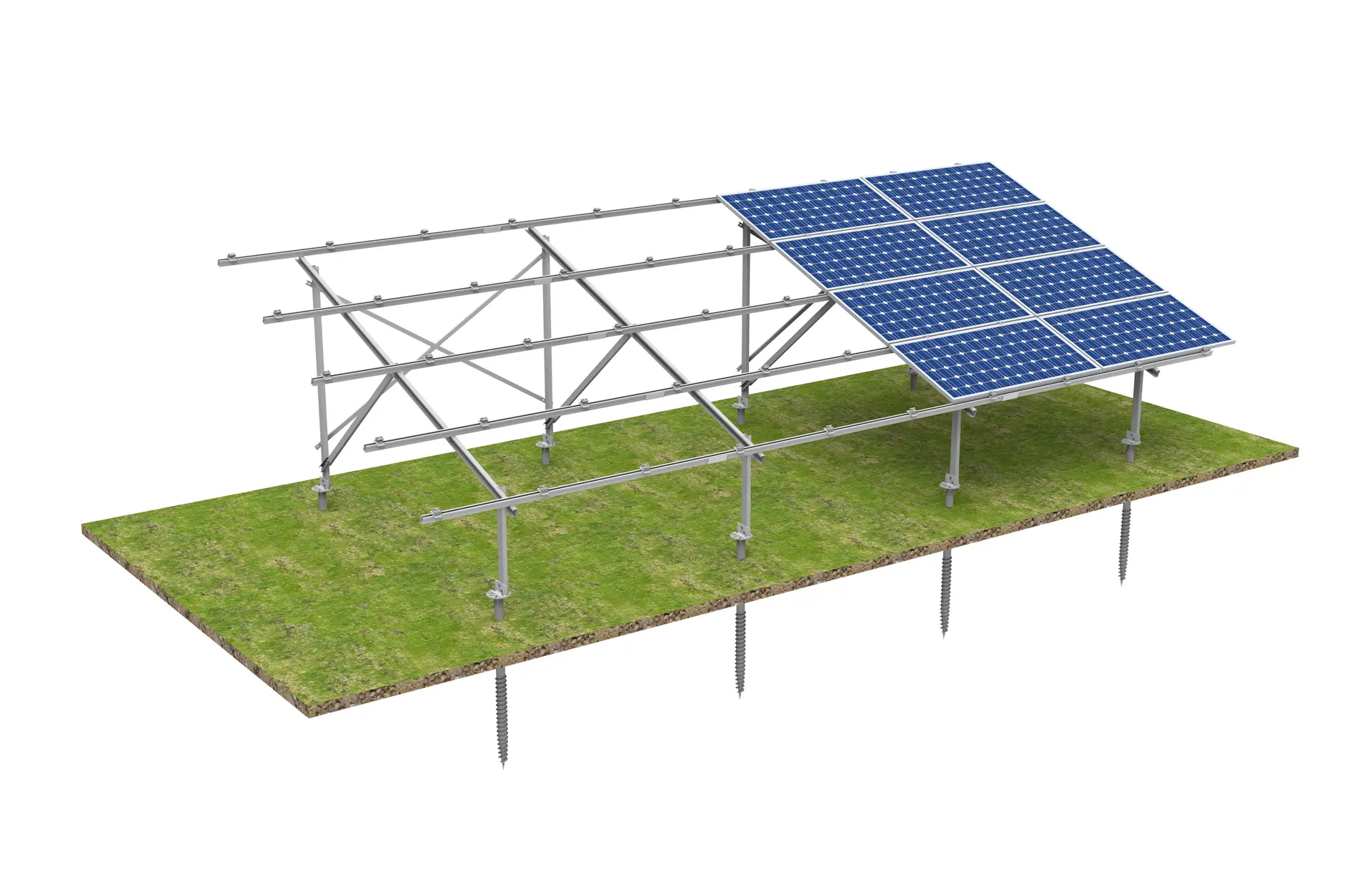With the increasing demand for solar energy, ground mount solar racking has become an important part of solar installations. These sturdy structures provide a stable foundation for solar panels, allowing them to capture sunlight and convert it into clean electricity efficiently. In this article, we’ll delve into the world of ground mount solar racking, exploring its benefits, types, and installation considerations.
Ground mounted systems are very flexible and can be customized to suit different project requirements. They can be deployed in open fields, farmland or even uneven terrain. Whether you are installing a small residential system or a large-scale commercial solar to sell, ground mount racking can be adapted to your needs.
What is solar ground mount racking?
Ground mount solar racking refers to the framework that supports solar panels when they are mounted directly on the ground, rather than on the roof.
Unlike rooftop systems that utilize an existing roof, ground mount systems are designed to withstand a variety of terrain and site conditions. Let’s explore the key aspects of ground mounted solar racking:

Components of ground mount solar racking
Let’s break down the basic components of a ground mount solar rack:
Rails: As the support of the system, rails provide structural support for the solar panels, which offer strength and spanning capabilities. Fewer roof penetrations mean cost-effective design.
Bonded structural joints: Ensure a strong connection between the rails without assembly, tools or hardware.
Universal fasteners: for center clamps to secure solar panels. In combination with a stop sleeve, it can be used as an end clamp.
End Clamp: This tool-less, invisible end clamp enhances aesthetics while providing a strong connection.
Junction Box: Encloses wires and protects up to 4 solar module strings for safety and organization.
Diagonal Cross Supports: For installations that require additional support, diagonal cross support assemblies provide stability.
Rail Connectors and Top Caps: These components connect and support lateral conduits to ensure sturdy construction.
Fittings: End caps, wire clips, and other fittings provide a complete look and support electrical wiring.

Mounting and foundation options
Cheapest ground mount solar racking systems can be installed using a variety of foundation methods:
- Concrete Piles: Poured concrete piles provide stability and durability.
- Ground Screw Piles: These screw anchors are suitable for softer soils and can be easily adjusted.
- Soil Class: The Ground Mount bracket is compatible with soil classes 2-4.

Advantages of ground mount solar racking
- Optimal Sun Exposure: Ground mount systems can be strategically placed to maximize sun exposure throughout the day.
- Easy Maintenance: Solar panels are straightforward to clean and maintain.
- Scalable: Ground-mounted arrays can be easily expanded to accommodate future energy needs.
- Affordable: Simple and adaptable installation makes ground mounted racking a cost-effective option.
Solar panel ground mount racks offer flexibility, durability, and efficient energy production. Whether you are a homeowner, farmer, or business owner, these systems provide a reliable solution for utilizing solar energy.

Considerations for ground mount solar racking
Site Selection:
Choose a suitable location with minimal shading from nearby structures or vegetation.
Evaluate soil conditions, drainage, and accessibility for installation and maintenance.
Foundation Options:
Consider different foundation methods, such as concrete piers, ground screws, or driven posts.
Soil classes 2-4 are typically compatible with ground mount racking.
Terrain Adaptability:
Ground mount systems can be customized for various terrains, including uneven or sloped land.
Assess the slope tolerances (North-South and East-West) to ensure proper alignment.
Maintenance Accessibility:
Ground mount arrays allow easy access for cleaning, inspection, and maintenance.
Ensure that the system design facilitates safe and efficient upkeep.
FAQ
What is the lifespan of solar racking and mounting equipment?
Solar racking systems are designed for long-term use, typically lasting 20-30 years or more. Regular inspections and maintenance ensure optimal performance over time.
Can solar racking systems be customized to fit different roof types?
Yes, some manufacturers offer customizable racking solutions for specific roof configurations.
Are ground-mounted systems more expensive than roof-mounted systems?
Ground mount systems may have higher upfront installation costs due to foundation work. However, their long-term benefits often outweigh the initial investment.
How can I ensure the structural integrity of my solar mounting system?
Work with reputable manufacturers and installers. Regular inspections and adherence to design specifications are essential for safety and durability.











